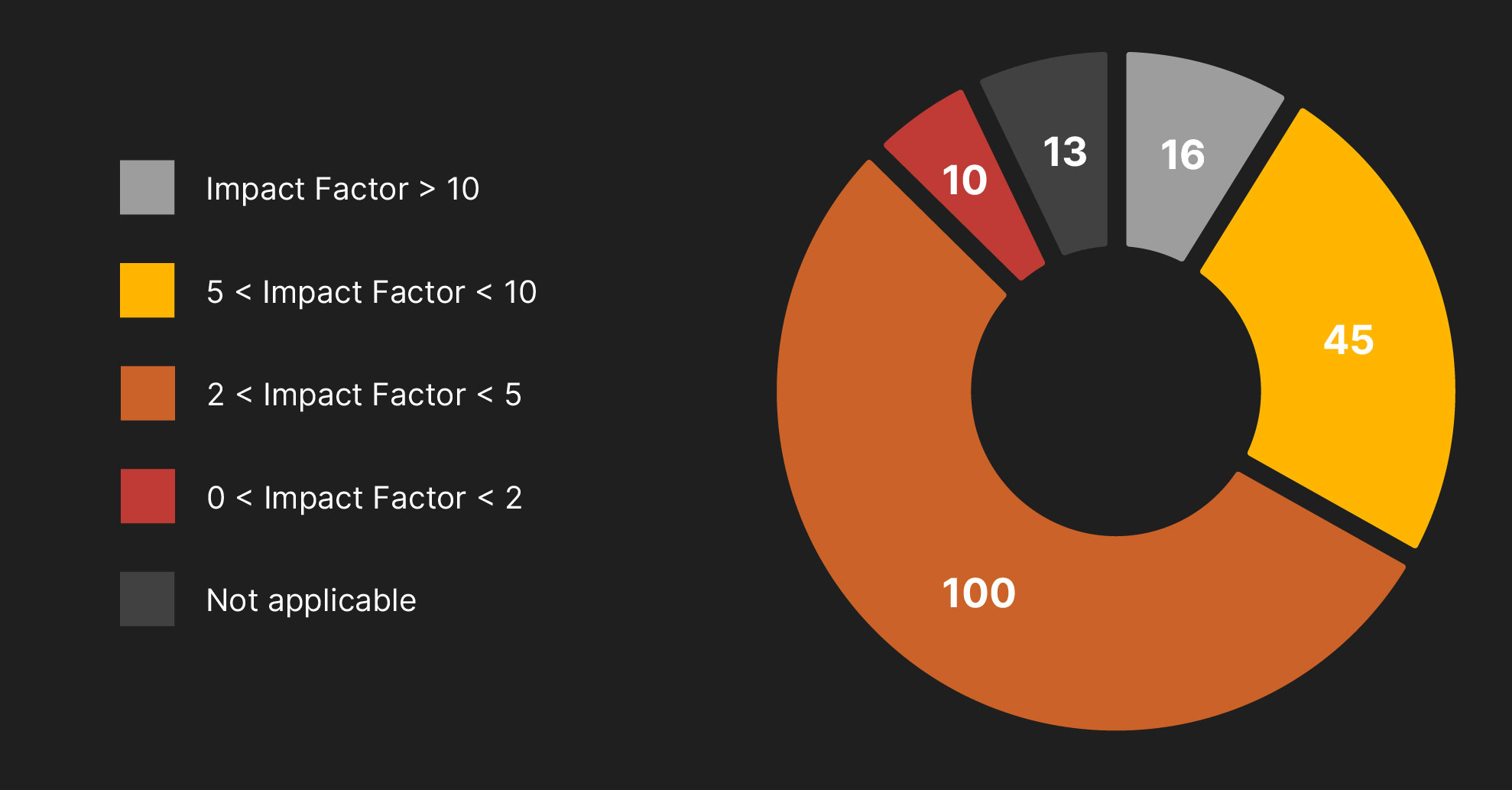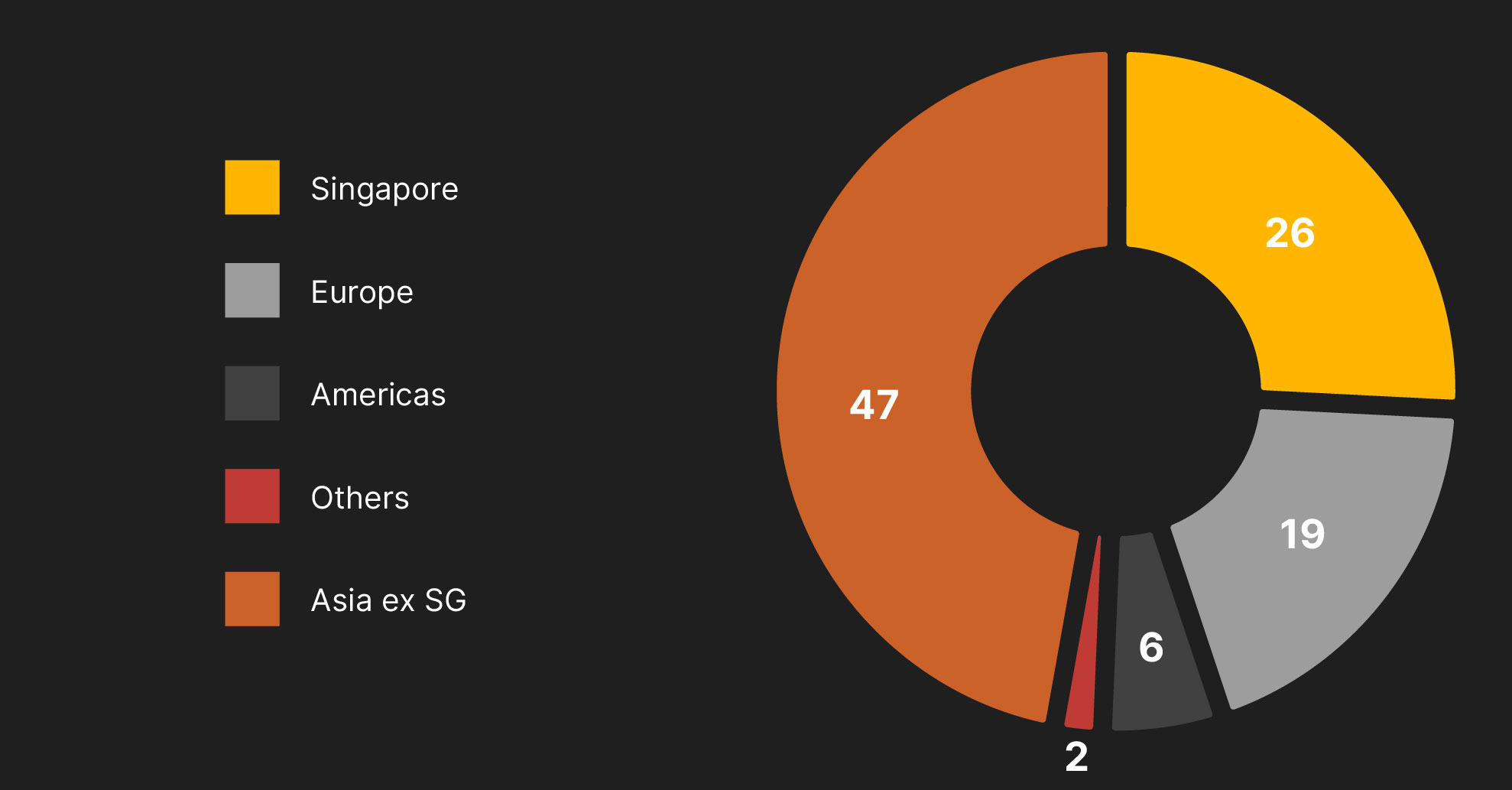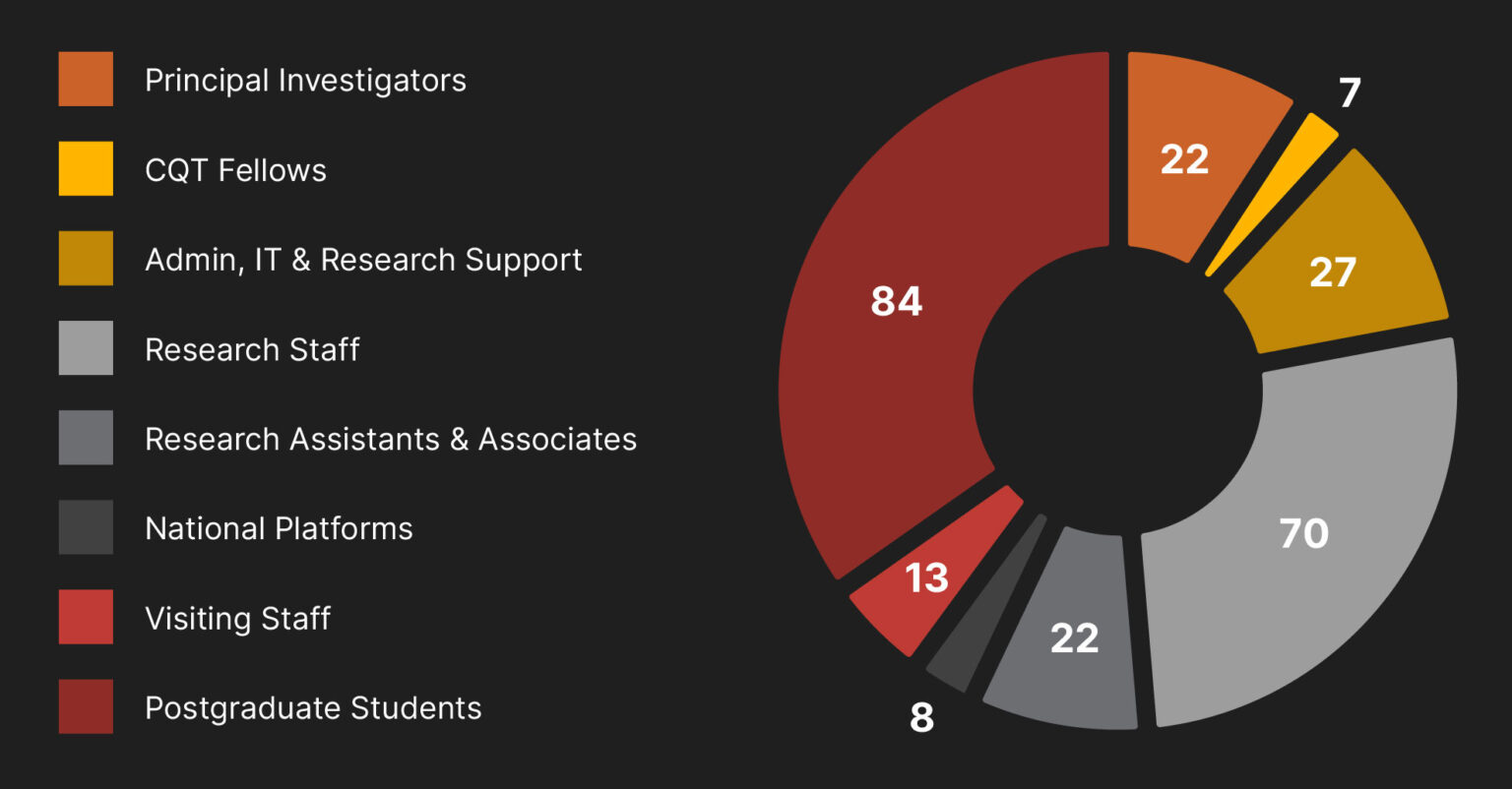Thermodynamical laws arise in games of UNO
Project conceived for Singapore schools’ Science Research Programme with the UNO card game led to a peer-reviewed publication
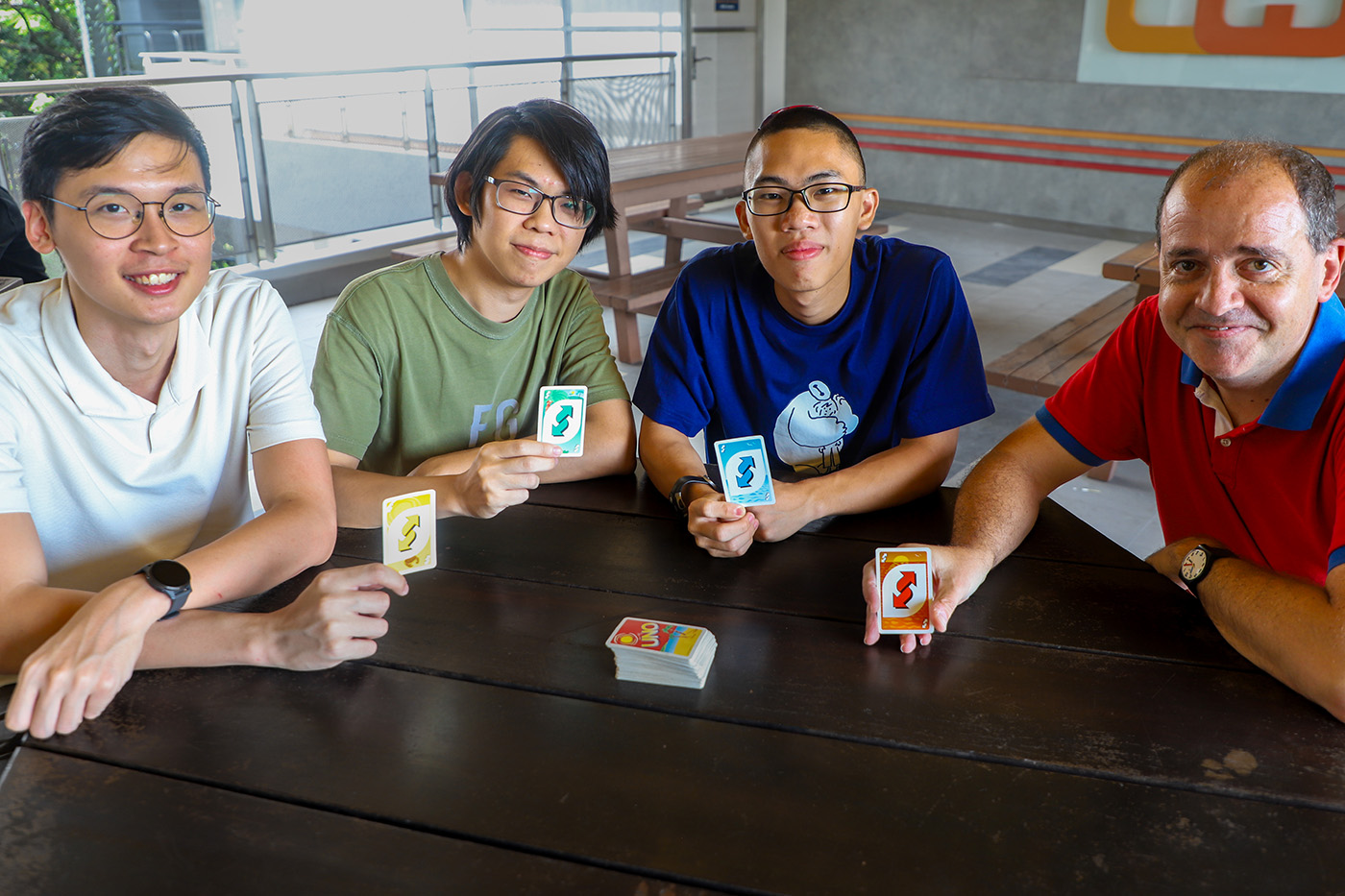
Image: (From left) Peter Sidajaya, Clive Aw, Jovan Low and Valerio Scarani engaging in serious work.
A school student who played 10 million games of UNO during an internship at CQT has earned himself and the group that hosted him a paper in Physical Review Research.
The student’s work supported a team led by CQT Principal Investigator Valerio Scarani to observe a well-known feature of thermodynamics in the gameplay. They published their findings on 14 April 2025.
Fluctuation relations in thermodynamics describe how a system evolves in an environment that introduces randomness. One example where fluctuation relations apply is in the folding and unfolding of biological molecules, such as an RNA strand in a wet environment.
Now Valerio and his group have shown that such fluctuation relations can emerge in non-physical settings too. They considered the number of cards in a player’s hand in UNO, finding that how it changes adheres to Crooks’ fluctuation theorem.
“When we first saw the results, we thought it could not be true,” says PhD student Peter Sidajaya, who is first author of the paper. “It was interesting to get a concrete appearance of entropy production in a setting that has clearly nothing to do with thermodynamics.”
Peter and Valerio’s co-authors are Research Fellow Clive Aw, and Jovan Low, who worked on the project as part of the Science Research Programme (SRP) while he was a student at Eunoia Junior College. SRP is a collaboration between the NUS Faculty of Science, where Valerio has a co-appointment as Professor in the Department of Physics, the NUS College of Design and Engineering and the Gifted Education Branch of the Ministry of Education, Singapore.
Why UNO of all things?
Having studied the logical structure of fluctuation relations in earlier work, the team had a hunch these relations could emerge in non-physical settings. Fluctuation relations typically define a fluctuating variable, such as entropy production, and a forward and reverse process.
Here’s where they saw a correspondence to the card game. In UNO, players are randomly dealt a hand of seven cards from a deck, which is then placed face down. Next to it, the players start a game pile by turning just one card face-up. Each player seeks to be the first to lose all the cards in their hand. During a turn, they play a card on top of the game pile matching either the colour, number or symbol of the topmost card. Special cards may direct players to skip the next player’s turn, reverse the direction of play or force the next player to pick up cards from the deck. If it is not possible for them to play a card, they draw one card from the deck.
To describe this in terms of fluctuations, the researchers looked at how a player, Alice, goes from having some initial number of cards in hand to some final number of cards.
The fluctuating variable is the number of interactions Alice has with the deck to make this transition. Every time Alice draws or plays a card, the number of interactions increases by one. If Alice is playing to win, the number of deck interactions is few because Alice avoids situations where she is forced to draw cards. The researchers consider this the ‘forward process’. They define the reverse process to be a strategy that is likely to lose, or Alice playing badly.
Crooks’ fluctuation and crooked walks
When Jovan joined the group, he took on the challenge of collecting experimental data from games of UNO to test this model. Rather than playing 10 million rounds of cards himself, he wrote code to simulate on a computer a game between Alice and friends.
Unlike Alice, the rest of the players are assigned to play randomly, akin to the external environment affecting the evolution of a physical system. Their plays, such as the plus-two cards and skip cards, affect Alice’s interactions with the deck.
Finally, the team plotted fluctuation relation graphs for various changes in the number of cards in Alice’s hand. Overall, the results followed Crooks’ fluctuation theorem.
To interpret their results, they showed that Crooks’ relation emerges because the card game has certain characteristics such as changes in the number of cards being analogous to a random walk, which has been compared to the crooked walk of a drunkard, and the number of deck interactions corresponding to a measure known as first passage time.
Where the UNO setting is different, the fluctuation relation graph deviates from Crooks’ relation. For example, a game of UNO ends while a random walk is infinite. This shows up as curve in the tail of graph as compared to a linear relation when Crooks’ relation holds. The researchers also found that removing UNO’s plus-cards made Crooks’ relation hold more strongly.
“It is interesting to see how thermodynamics and game theory can cross-pollinate,” Clive says. “To find something that is usually contextualised in physical phenomena somewhere else is also just conceptually remarkable.”
For Jovan, working on the project was surreal but enriching. “I never really thought that I would come to an actual university to work with PhD students on any project until I became a university student myself. I think it is more than what I could ask for.” He intends to study computer science and mathematics at Nanyang Technological University, Singapore, after National Service.
Related Stories
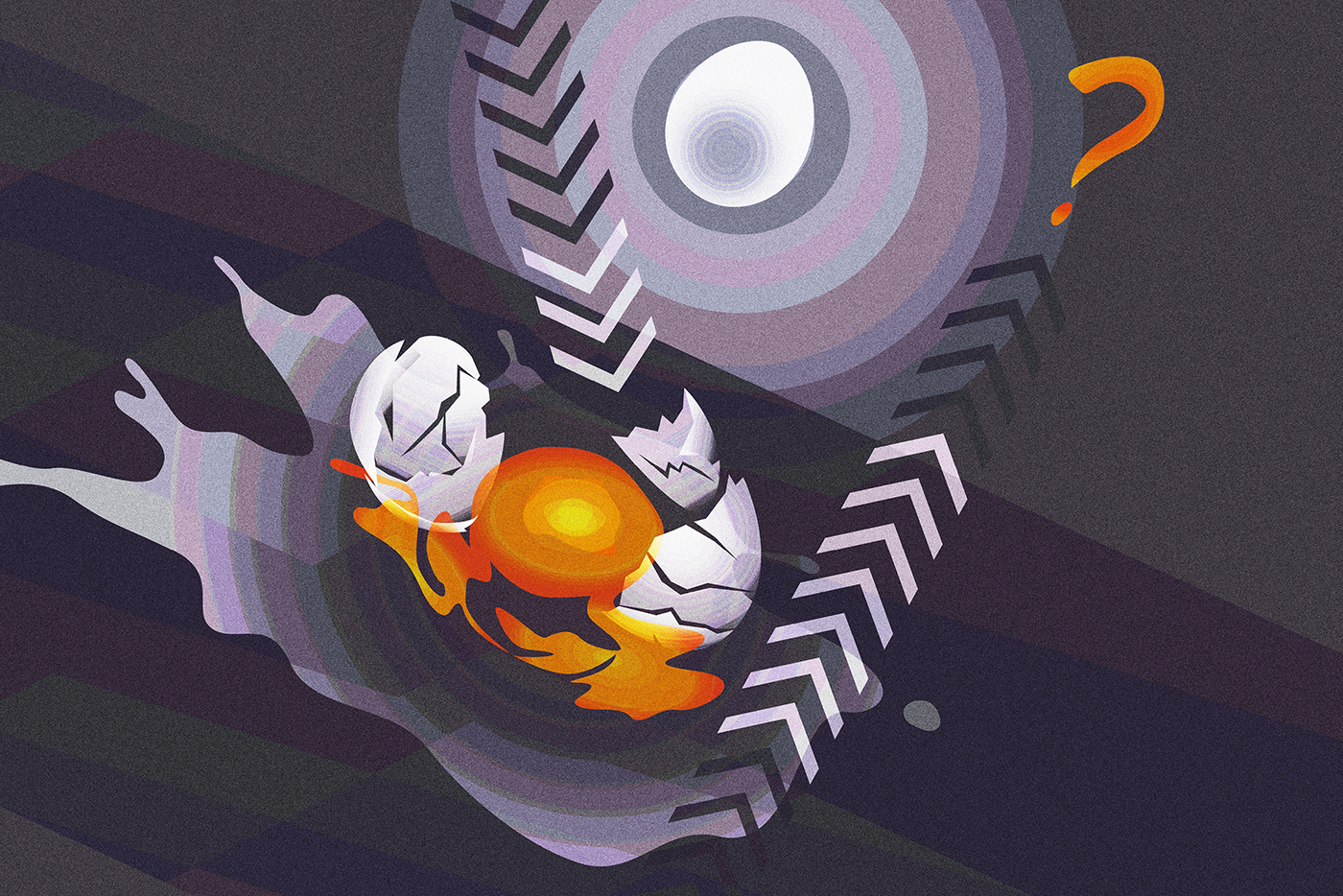
6 May 2021
Logic can replace physics in deriving fluctuation relations
CQT Principal Investigator Valerio Scarani and his collaborator Francesco Buscemi find they can use logical retrodiction to construct well-known equations


